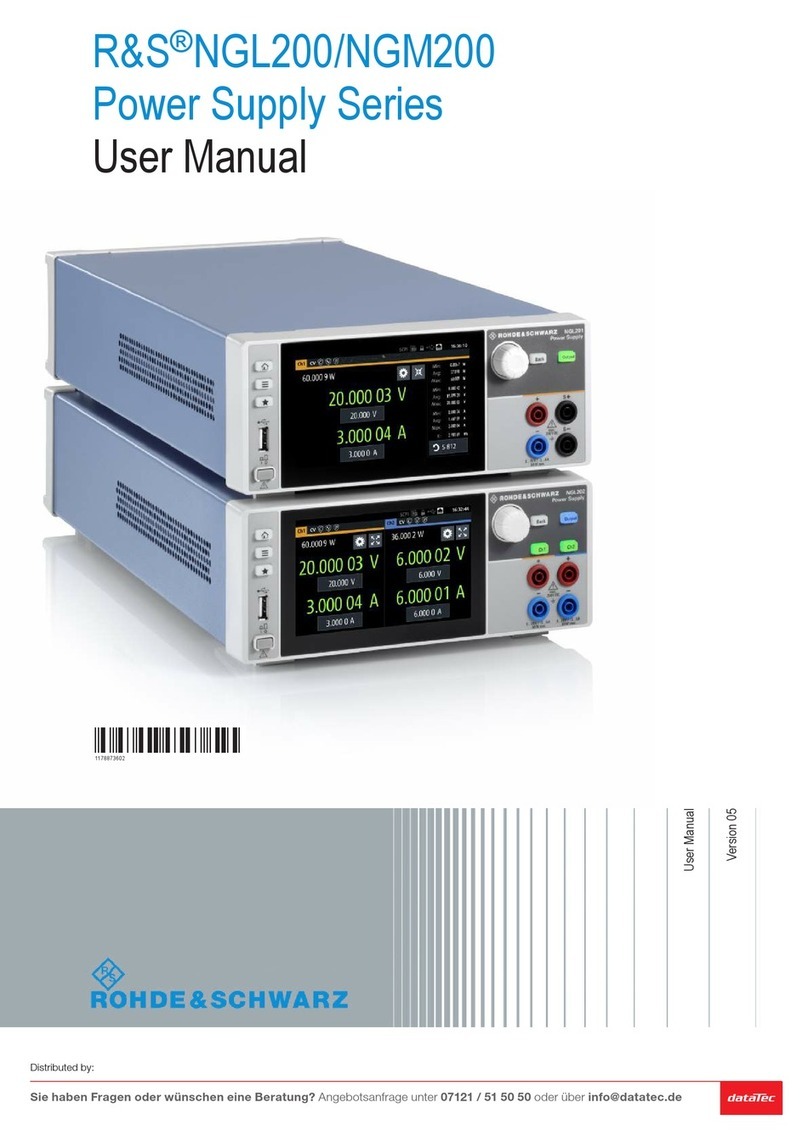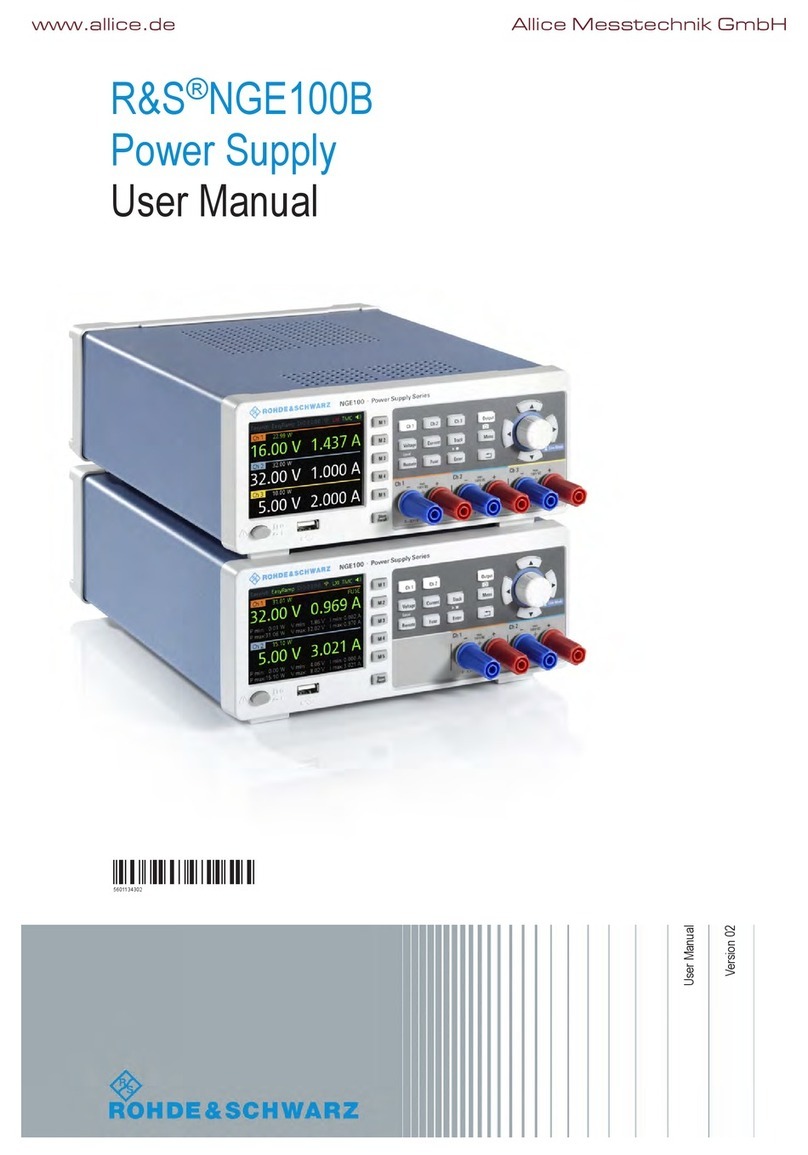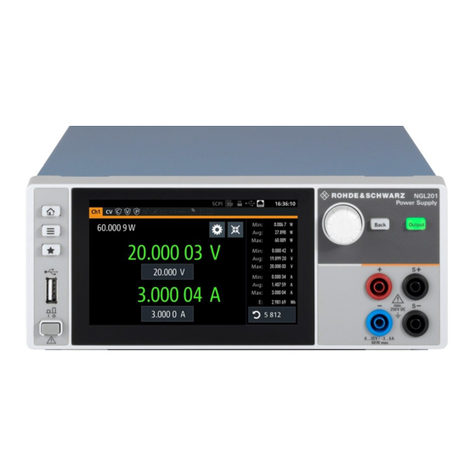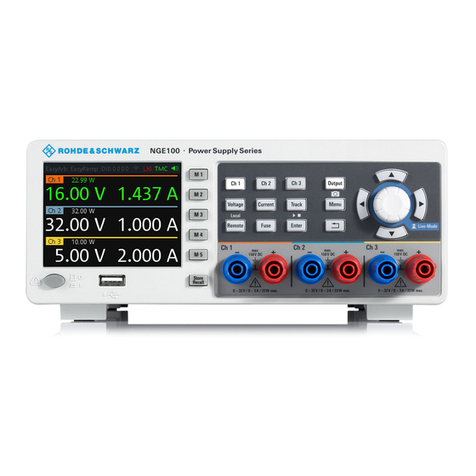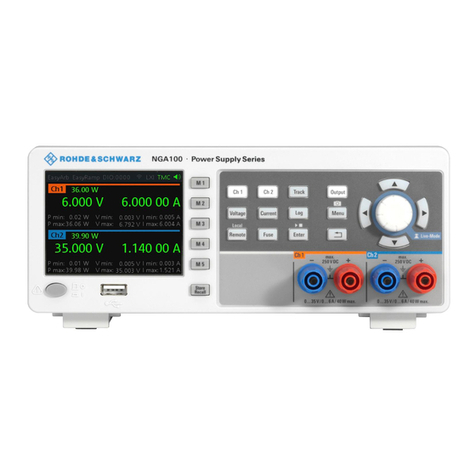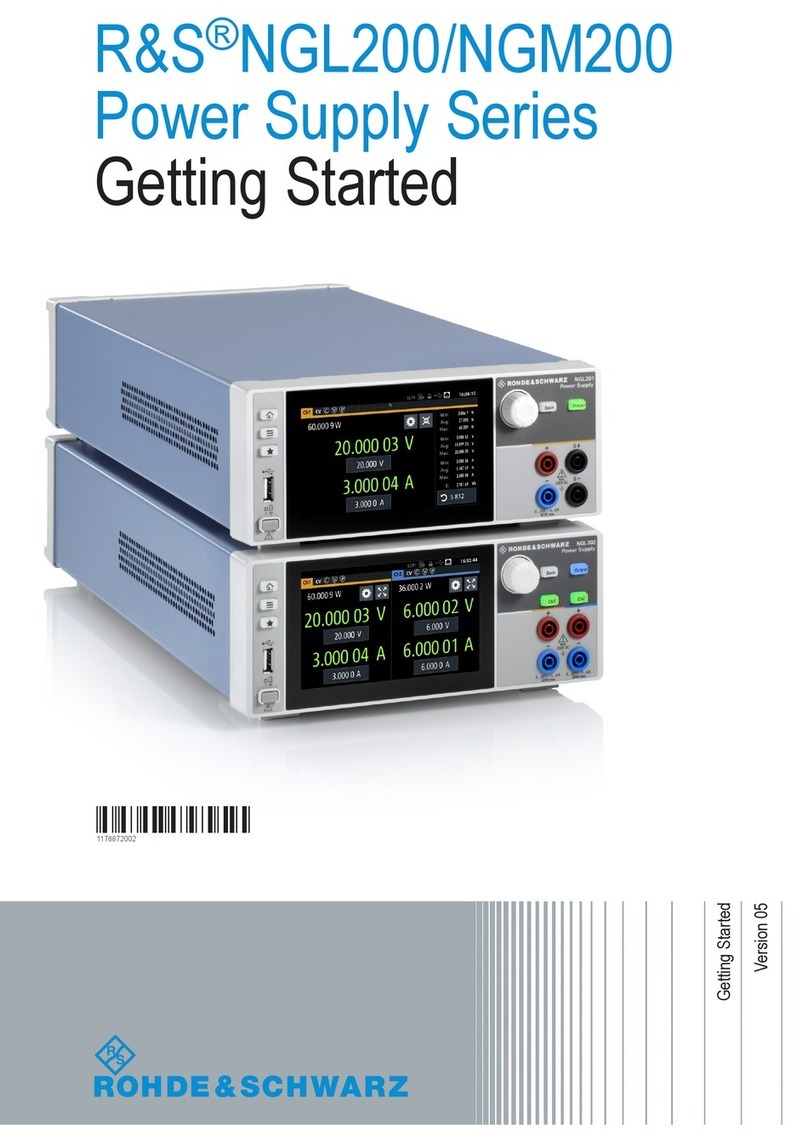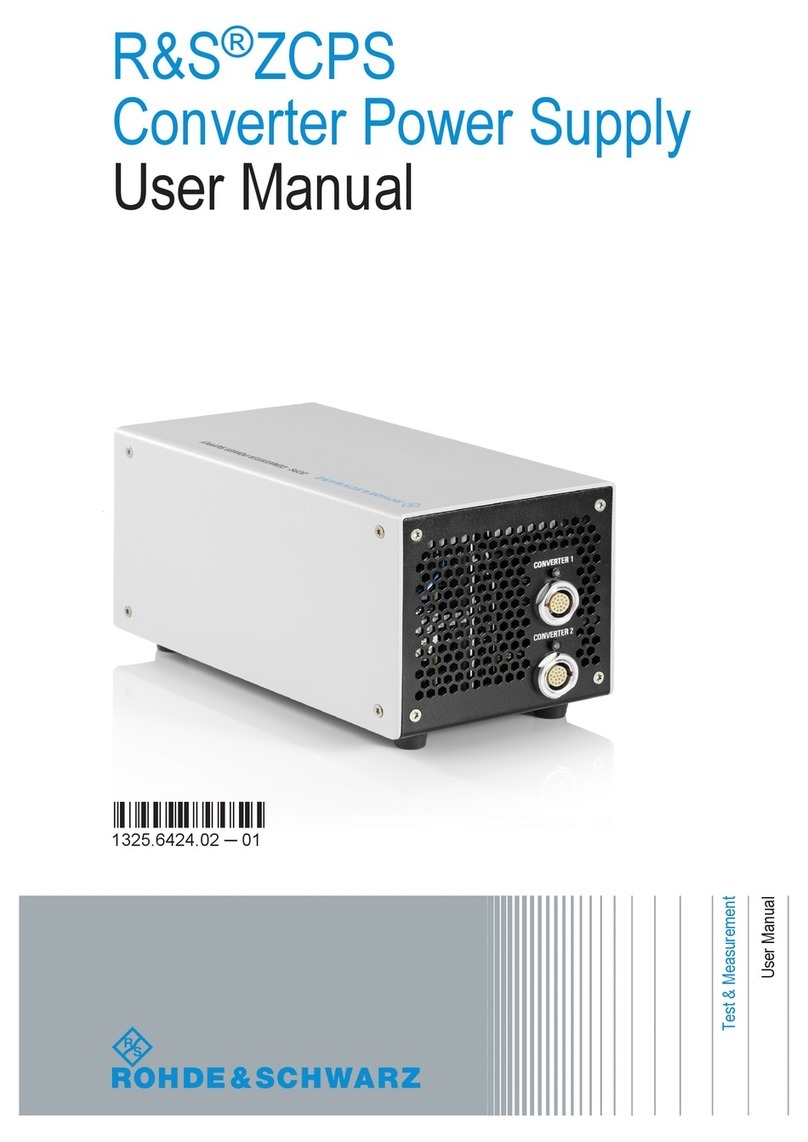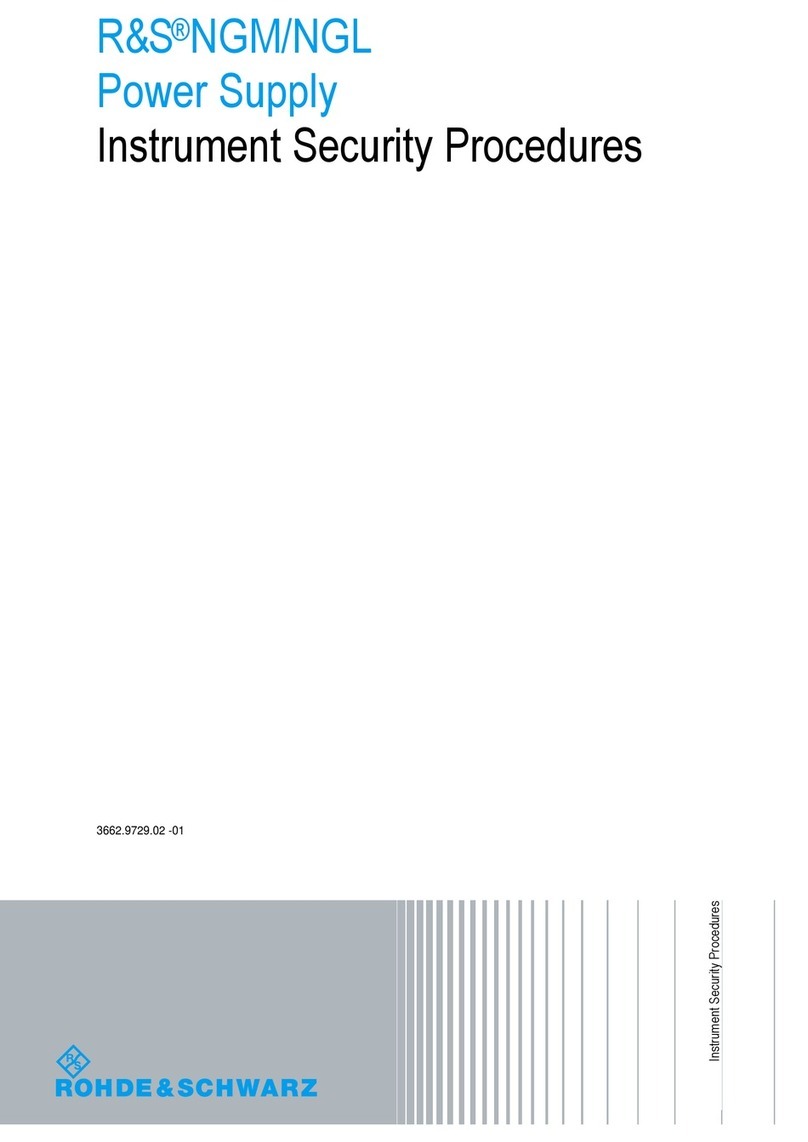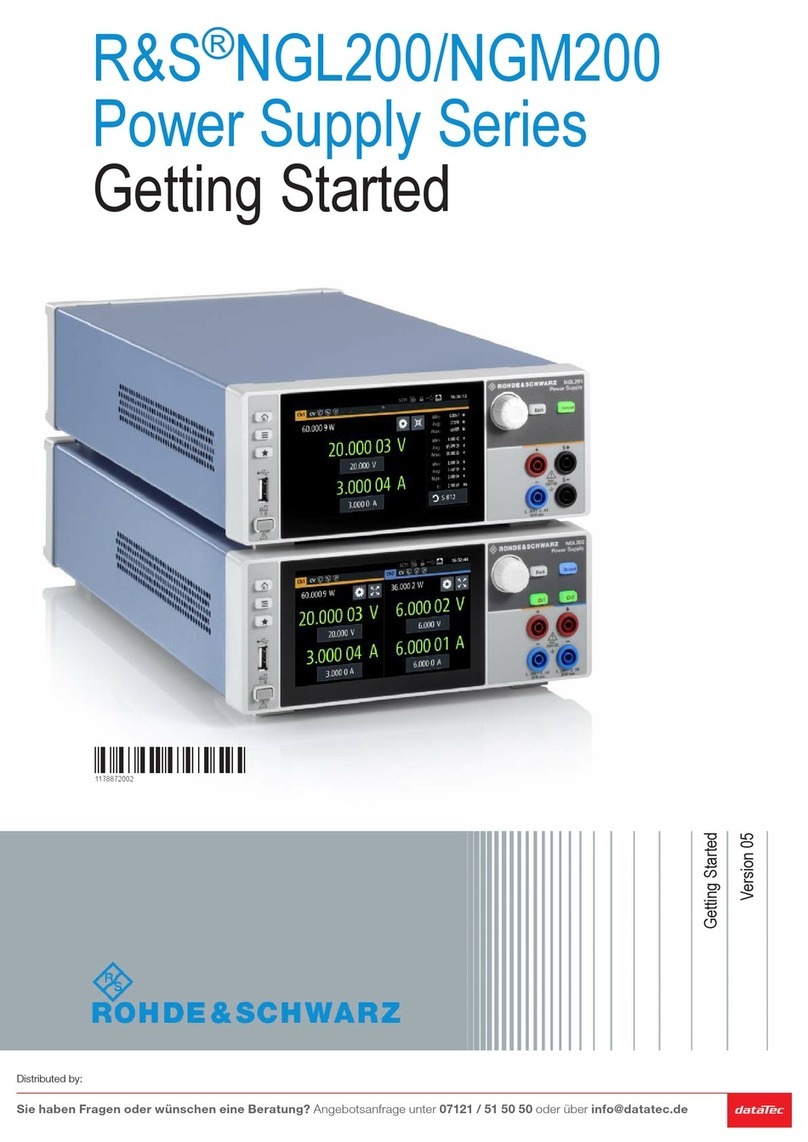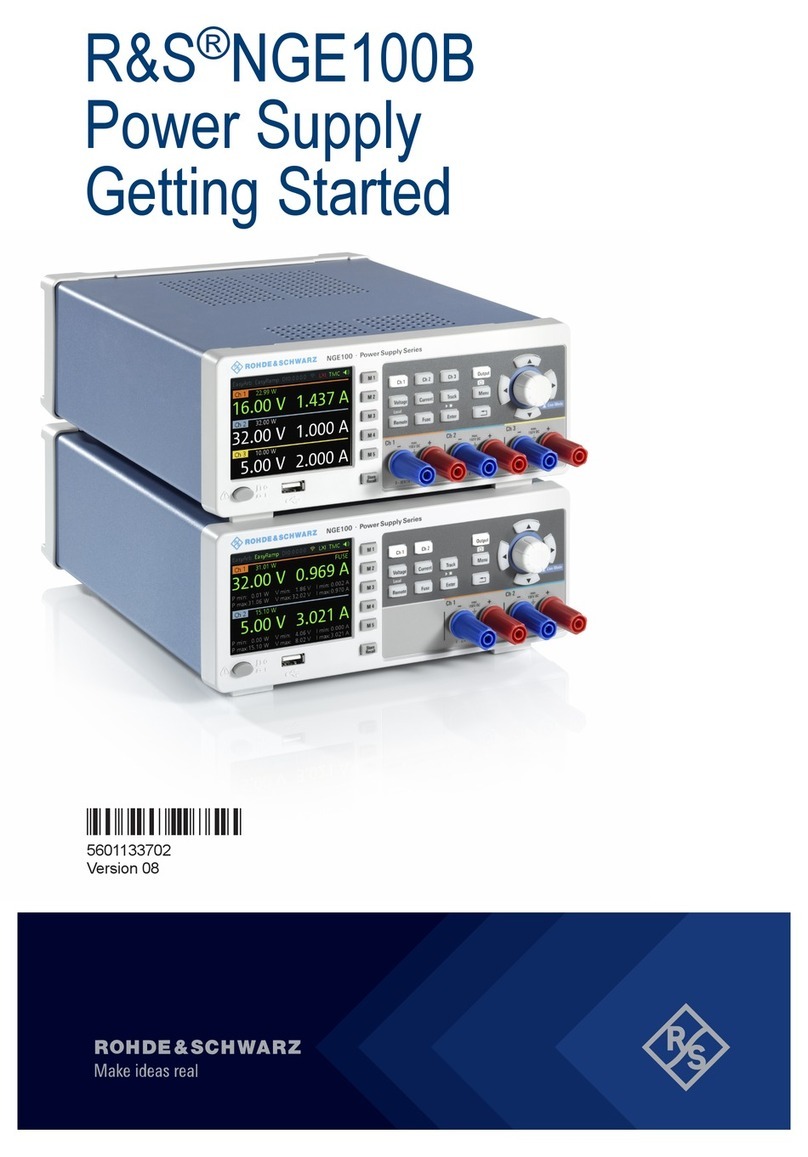
Contents
R&S®NGE100B
4User Manual 5601.1343.02 ─ 04
4.3.3 Activating the Channels Output.....................................................................................24
4.3.4 Storing/Recalling of Instrument Settings....................................................................... 24
4.4 Maintenance................................................................................................................ 25
5 Instrument Functions.......................................................................... 26
5.1 User Interface.............................................................................................................. 26
5.1.1 Screen Layout............................................................................................................... 26
5.1.2 Function Keys............................................................................................................... 29
5.1.3 Virtual Keyboard............................................................................................................30
5.1.4 Navigation Controls.......................................................................................................31
5.1.4.1 Rotary Knob.................................................................................................................. 32
5.1.4.2 Arrow Keys....................................................................................................................32
5.1.4.3 Live-Mode..................................................................................................................... 32
5.1.5 Menu............................................................................................................................. 33
5.2 Power Derating............................................................................................................35
5.3 Output Modes.............................................................................................................. 35
5.4 Basic Functions.......................................................................................................... 36
5.4.1 Setting the Channels Voltage and Current....................................................................36
5.4.2 Tracking Function..........................................................................................................37
5.4.3 Activating Fuse..............................................................................................................38
5.4.4 Activating the Channels Output.....................................................................................39
5.4.5 Store and Recall............................................................................................................39
5.5 Advanced Functions...................................................................................................41
5.5.1 Protection...................................................................................................................... 41
5.5.2 Fuse.............................................................................................................................. 43
5.5.3 EasyArb.........................................................................................................................44
5.5.4 EasyRamp.....................................................................................................................45
5.5.5 Digital Trigger I/O.......................................................................................................... 47
5.6 Connecting to a Network............................................................................................49
5.6.1 LAN Connection............................................................................................................ 49
5.6.1.1 Wired Connection..........................................................................................................49
5.6.1.2 Wireless Connection..................................................................................................... 52
5.6.2 USB Connection............................................................................................................53
5.7 General Instrument Settings...................................................................................... 54
